Creating Pottery: A Journey of Self-Discovery
Have you ever felt the urge to create something with your own hands? Pottery-making offers an incredible opportunity to not only craft beautiful items but also to embark on a transformative journey of self-discovery. Imagine sitting at a potter's wheel, the cool, damp clay spinning beneath your fingers, as you mold it into a unique piece of art. This process is more than just shaping clay; it's about tapping into your inner creativity and finding a sense of peace amidst the chaos of everyday life. The tactile nature of pottery allows you to express emotions and thoughts that words often fail to convey.
As you delve into the world of pottery, you'll discover that it serves as a form of therapy, helping to reduce stress and anxiety. The simple act of kneading clay can be incredibly meditative, allowing your mind to focus solely on the moment. This mindfulness can lead to a profound sense of accomplishment, as each piece you create reflects your personal growth and artistic evolution. It’s like embarking on a treasure hunt where each crafted item is a gem that showcases your journey.
But let's be honest, the path to mastering pottery is not always smooth. It requires patience, practice, and a willingness to embrace mistakes. Just like life, your pottery journey will have its ups and downs. You might create a masterpiece one day and a misshapen bowl the next. However, it's through these experiences that you learn and grow. The clay becomes a mirror, reflecting your progress and encouraging you to keep pushing your creative boundaries.
Moreover, pottery-making fosters a sense of community. Whether you join a local class or connect with fellow potters online, sharing your experiences and learning from others can be incredibly enriching. You’ll find that the pottery community is filled with individuals who are just as passionate about their craft, eager to share techniques, tips, and inspiration. This camaraderie can amplify your journey, providing support and motivation as you explore your artistic capabilities.
In essence, creating pottery is a holistic experience that nurtures both the mind and spirit. It encourages you to slow down, be present, and connect with your creative self. As you shape the clay, you also shape your understanding of who you are as an artist. So, are you ready to embark on this exciting journey? Grab your tools, roll up your sleeves, and let the adventure of pottery-making lead you to discover the artist within!
Engaging in pottery can significantly reduce stress and anxiety, providing a meditative experience that promotes mental well-being while fostering a sense of accomplishment and relaxation.
Understanding the fundamental tools and materials required for pottery is crucial for beginners, as it lays the groundwork for successful creation and enhances the overall crafting experience.
Different types of clay offer unique properties and challenges, influencing the final outcome of your pottery. Knowing which clay to use is essential for achieving desired results.
Earthenware is porous and ideal for decorative pieces, while stoneware is durable and versatile, suitable for functional items. Each type serves distinct purposes in pottery-making.
Glazes not only enhance the aesthetic appeal of pottery but also provide a protective layer. Selecting the right glaze can elevate your creations to a new level of artistry.
Mastering fundamental pottery techniques such as handbuilding, wheel throwing, and glazing is essential for beginners, allowing them to express their creativity and develop their unique style.
Pottery is a powerful medium for self-expression, allowing individuals to explore their creativity and discover their artistic voice through the tactile process of shaping clay.
Inspiration can come from various sources, including nature, culture, and personal experiences. Identifying what inspires you can enhance your pottery-making journey.
Keeping a journal or portfolio of your pottery journey can help track your progress, reflect on your growth, and inspire new ideas for future projects.
- What are the best types of clay for beginners? Earthenware and stoneware are excellent choices for beginners due to their versatility and ease of use.
- How can I reduce stress while making pottery? Focus on the tactile experience of shaping the clay, and allow yourself to be present in the moment.
- What tools do I need to start pottery? Basic tools include a potter's wheel, various shaping tools, and a kiln for firing your pieces.
- Can pottery be a form of therapy? Absolutely! Many people find the process of creating pottery to be therapeutic and a great way to relieve stress.
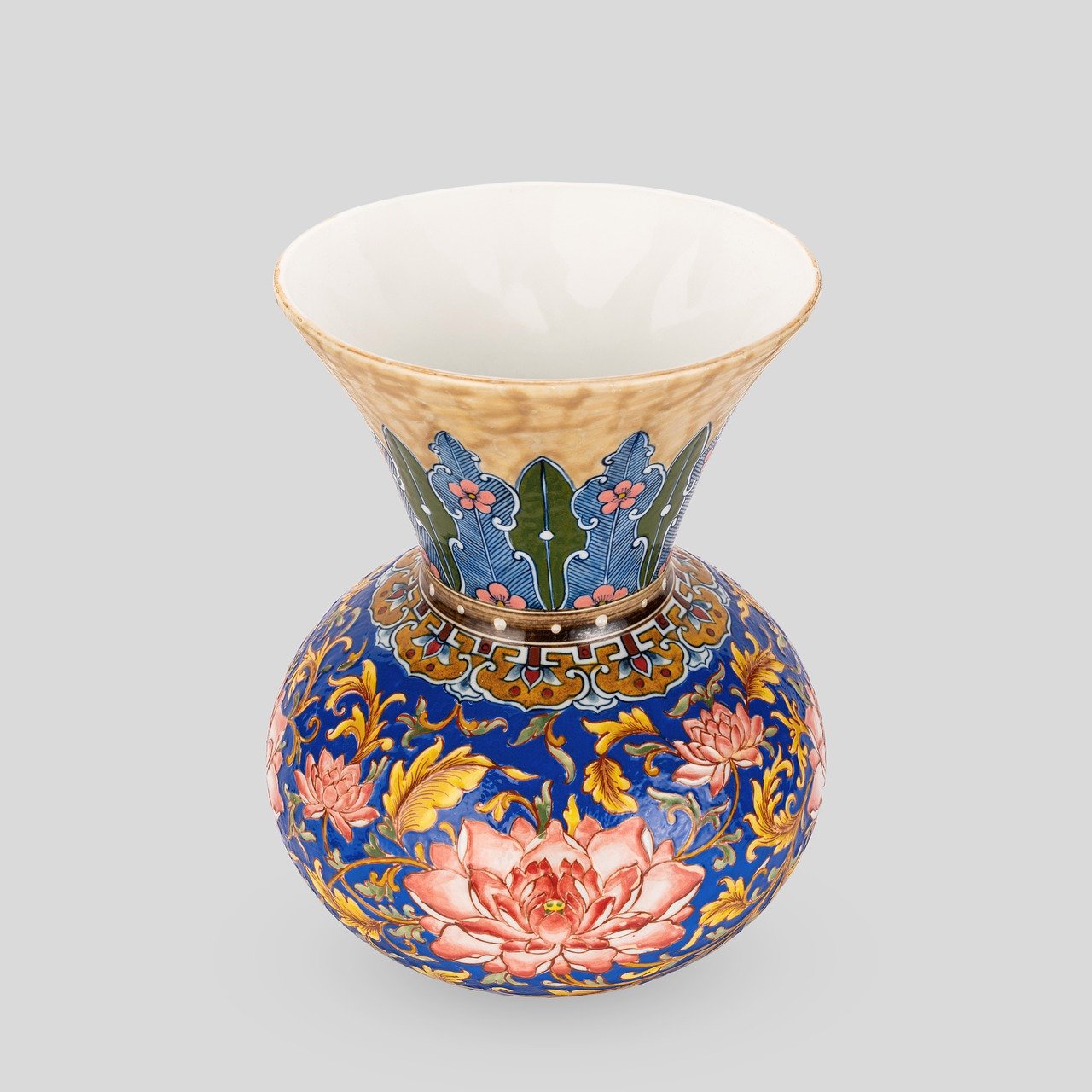
The Therapeutic Benefits of Pottery
Engaging in pottery is not just about shaping clay; it’s a transformative experience that significantly reduces stress and anxiety. Imagine sitting at a potter’s wheel, your hands covered in soft, cool clay, as you mold it into something beautiful. This simple act can become a form of meditation, allowing your mind to quiet down and focus on the present moment. The tactile sensation of the clay can ground you, making you feel more connected to your surroundings and yourself.
Pottery-making promotes mental well-being in several ways. Firstly, it provides a creative outlet that can be incredibly fulfilling. When you create something with your hands, you experience a sense of accomplishment that boosts your self-esteem and confidence. As you see your creations take shape, the feeling of satisfaction can wash away the worries of the day, leaving you feeling relaxed and rejuvenated.
Moreover, pottery encourages mindfulness. The process requires concentration and attention to detail, which helps you to stay in the moment. This focus can act as a distraction from negative thoughts and stressors, creating a peaceful mental space. It’s like a mini-vacation for your mind! By immersing yourself in the rhythmic motions of kneading, shaping, and glazing, you can escape the whirlwind of daily life.
Here are some of the therapeutic benefits of pottery:
- Stress Reduction: The repetitive motions and focus required in pottery can lower cortisol levels, the hormone associated with stress.
- Enhanced Creativity: Engaging in creative activities like pottery can stimulate brain function and foster innovative thinking.
- Social Connection: Pottery classes often provide a sense of community, allowing you to connect with others who share your interests.
- Improved Fine Motor Skills: The intricate work involved in pottery helps improve dexterity and coordination.
In addition to these benefits, pottery can also serve as a therapeutic tool for those dealing with emotional challenges. The act of creating can be cathartic, allowing individuals to express feelings that may be difficult to articulate. Whether it’s through the colors you choose or the shapes you create, pottery provides a safe space to explore and release emotions.
Lastly, the journey of pottery-making is one of personal growth. Each piece you create tells a story, not just of the clay but of your own experiences, struggles, and triumphs. As you learn to work with the medium, you also learn about patience, resilience, and the beauty of imperfection. Much like life itself, pottery teaches you that not every creation will turn out as planned, but that’s perfectly okay. Embracing these imperfections can lead to unexpected beauty and deeper self-acceptance.
Q: Can pottery really help reduce stress?
A: Yes, many people find that the process of working with clay is meditative and helps to alleviate stress and anxiety.
Q: Do I need to have prior experience to start pottery?
A: Not at all! Pottery is accessible to beginners, and many classes cater to all skill levels.
Q: What if my pottery pieces don’t turn out as expected?
A: That’s completely normal! Every potter has pieces that don’t meet their expectations. Embrace the learning process and enjoy the journey!
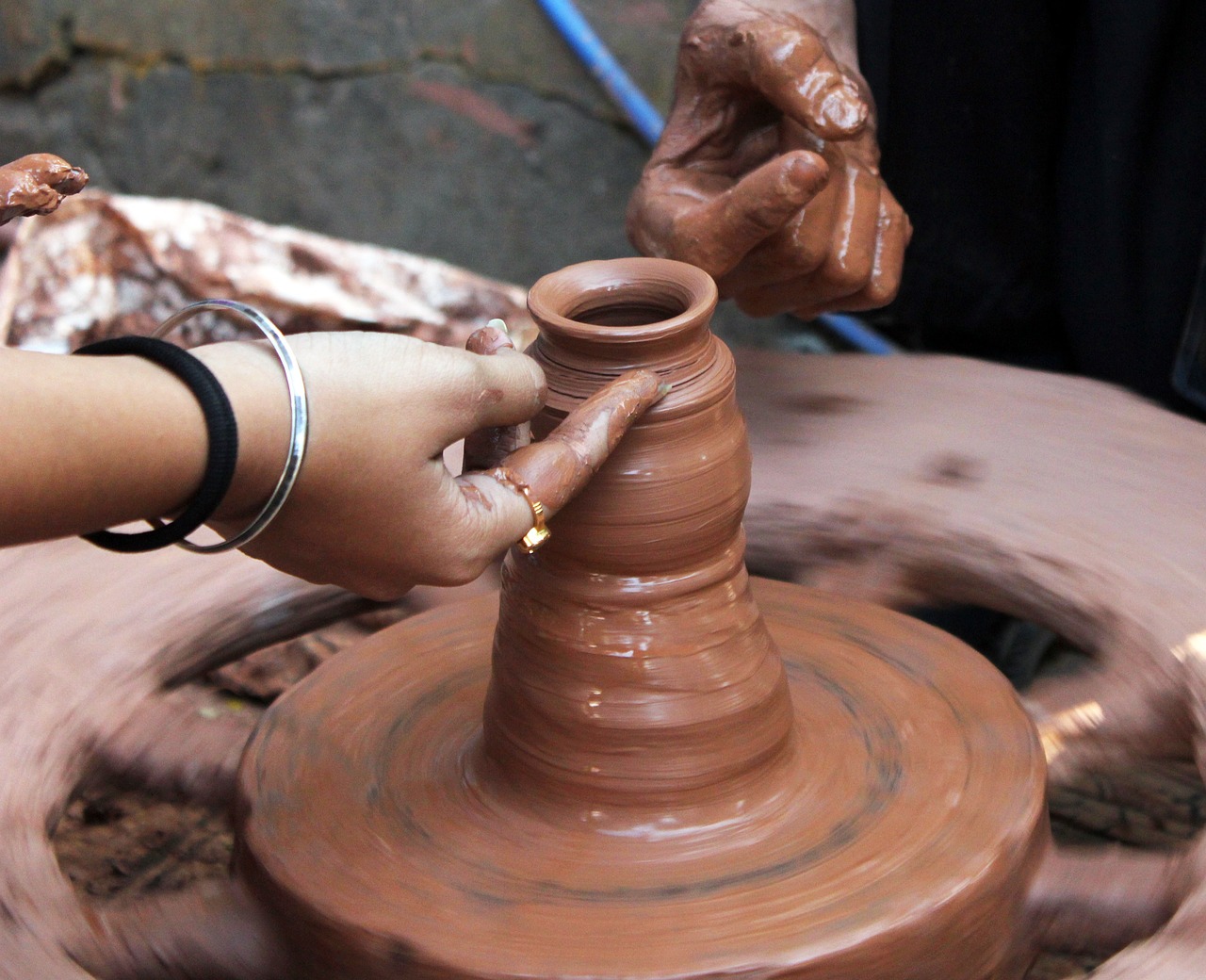
Essential Tools and Materials
When diving into the world of pottery, having the right tools and materials is like having a solid map before setting out on an adventure. It’s essential for beginners to understand what they need to create beautiful pieces and to enhance their overall crafting experience. The journey of pottery-making can be incredibly fulfilling, but it can also be overwhelming without the right equipment. Let’s break down the essentials that will guide you on your creative path.
The first thing you'll need is clay, which is the heart of pottery. There are various types of clay, each with its unique properties. For instance, earthenware is perfect for beginners due to its forgiving nature, while stoneware offers durability and is ideal for functional pieces. Choosing the right clay can significantly impact the final outcome of your work.
Next up, you’ll need some basic tools. Here’s a quick rundown of essential items:
- Potter's Wheel: If you're into wheel throwing, this is a must-have. It allows you to shape your clay with precision.
- Hand Tools: These include rib tools, trimming tools, and needle tools, which help in shaping and detailing your pieces.
- Rolling Pin: Perfect for flattening out slabs of clay for handbuilding.
- Sponge: Useful for smoothing surfaces and adding moisture.
- Glazing Tools: Brushes and spray guns help apply glazes evenly to create stunning finishes.
Beyond tools, let’s talk about glazes. Selecting the right glaze is crucial as it not only enhances the aesthetic appeal of your pottery but also provides a protective layer. There are various types of glazes, such as glossy, matte, and transparent, each offering different finishes and effects. Experimenting with glazes can elevate your creations, turning a simple bowl into a stunning piece of art.
In addition to these materials, having a dedicated workspace is vital. A clean and organized area allows you to focus on your craft without distractions. Make sure to include a sturdy table, good lighting, and storage for your tools and materials. This setup will not only enhance your productivity but also make the process more enjoyable.
Finally, don't forget about safety gear. A good dust mask and gloves can protect you from clay dust and chemicals in glazes. Pottery is a joyful art form, but it’s essential to prioritize your health while you create.
In summary, equipping yourself with the right tools and materials is fundamental to your pottery journey. Remember, each piece you create is a step toward discovering your unique artistic voice. So gather your supplies, embrace the messiness of creation, and let your hands shape your imagination!

Types of Clay
When it comes to pottery, the type of clay you choose can make a **world of difference** in your creations. Each type of clay has its own unique properties, characteristics, and challenges that can influence the final outcome of your pottery. Understanding these differences is essential for beginners and seasoned potters alike, as it allows for more informed decisions about your work. So, let’s dive into the various types of clay and what makes each one special!
One of the most common types of clay is **earthenware**. This clay is known for its **porous nature**, which means it can absorb water and is generally not suitable for functional ware unless properly glazed. Earthenware is perfect for decorative pieces because it fires at lower temperatures, typically between 1,830°F and 2,100°F (1,000°C to 1,150°C). The vibrant colors and textures it can achieve make it a favorite for artists looking to express their creativity.
On the other hand, we have **stoneware**. This type of clay is renowned for its **durability and versatility**, making it an excellent choice for functional items such as dishes and mugs. Stoneware is fired at higher temperatures, usually between 2,190°F and 2,400°F (1,200°C to 1,300°C), which makes it non-porous and able to withstand thermal shock. If you're looking to create pottery that can be used every day, stoneware is the way to go.
In addition to earthenware and stoneware, there is **porcelain**, a type of clay that is prized for its **elegance and translucency**. Porcelain requires a high firing temperature, often above 2,400°F (1,300°C), and is known for its strength and white finish. While it can be challenging to work with due to its smooth texture and tendency to warp, the results can be stunning, making it a popular choice for fine pottery and tableware.
| Type of Clay | Firing Temperature | Characteristics | Best For |
|---|---|---|---|
| Earthenware | 1,830°F - 2,100°F (1,000°C - 1,150°C) | Porous, vibrant colors | Decorative pieces |
| Stoneware | 2,190°F - 2,400°F (1,200°C - 1,300°C) | Durable, non-porous | Functional items (dishes, mugs) |
| Porcelain | Above 2,400°F (1,300°C) | Elegant, translucent | Fine pottery, tableware |
Choosing the right clay is not just about the **technical aspects**; it’s also about your personal style and what you want to create. As you experiment with different types of clay, you’ll discover which one resonates with you the most. Each type has its own personality, and finding that perfect match can be a thrilling part of your pottery journey!
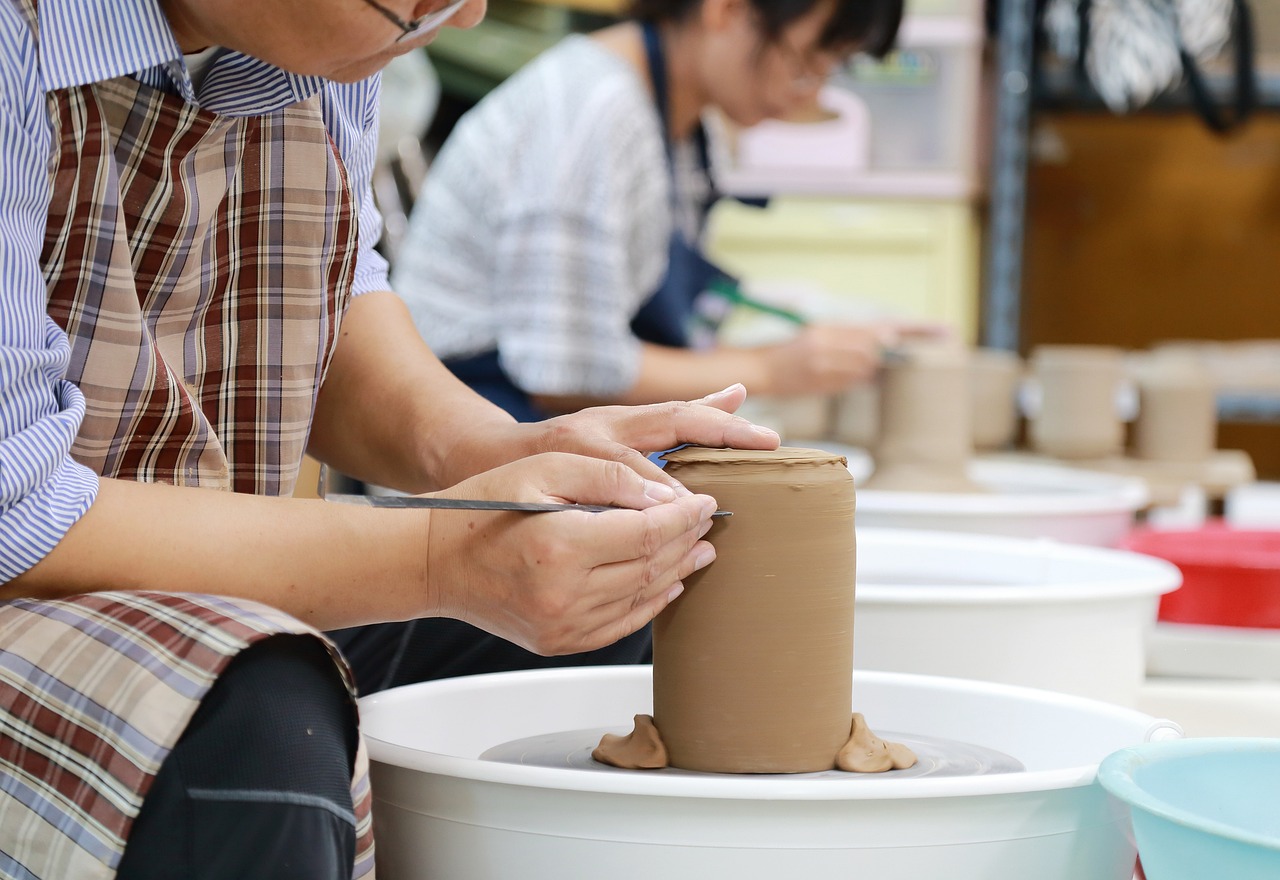
Earthenware vs. Stoneware
When diving into the world of pottery, one of the first decisions you'll face is choosing the right type of clay. Two of the most popular options are earthenware and stoneware, each with its own unique characteristics and applications. Understanding the differences between these two types can significantly impact your pottery-making experience and the final outcome of your creations.
Earthenware is a type of clay that is known for its porous nature. This means that it can easily absorb water and moisture, making it ideal for decorative pieces rather than functional ware. When fired at lower temperatures, typically around 1,830°F (1,000°C), earthenware retains a soft, earthy quality that many artists find appealing. Its natural finish often showcases a rustic charm, perfect for creating vibrant, colorful glazes that can turn a simple pot into a stunning work of art. However, because of its porosity, earthenware is not suitable for holding liquids unless it is properly glazed.
On the other hand, stoneware is fired at much higher temperatures, usually between 2,190°F (1,200°C) and 2,400°F (1,300°C). This high firing process makes stoneware dense and non-porous, which means it can hold liquids without leaking. This durability makes it ideal for functional items such as dinnerware, mugs, and cooking pots. Stoneware often has a smooth, glass-like finish that can be enhanced with various glazes, allowing for a wide range of artistic expression.
To help you visualize the differences, here’s a quick comparison:
| Characteristic | Earthenware | Stoneware |
|---|---|---|
| Firing Temperature | Lower (1,830°F / 1,000°C) | Higher (2,190°F - 2,400°F / 1,200°C - 1,300°C) |
| Porosity | Porous | Non-porous |
| Typical Uses | Decorative pieces | Functional ware (dinnerware, mugs) |
| Finish | Rustic, earthy | Smooth, glass-like |
Ultimately, the choice between earthenware and stoneware boils down to the intended use of your pottery. If you're looking to create beautiful, decorative items that showcase your artistic flair, earthenware might be the way to go. However, if you need durable, functional pieces that can stand the test of time, stoneware is your best bet. Each type of clay offers a unique journey in the world of pottery, inviting you to explore and experiment with your creative expression.
- Can I use earthenware for functional items? While earthenware can be used for functional items, it is not ideal for holding liquids unless properly glazed.
- What kind of glaze works best with stoneware? Stoneware can handle a variety of glazes, including glossy and matte finishes, allowing for a range of artistic expressions.
- Is one type of clay better than the other? It depends on your project goals. Each type has its advantages and is suited for different applications.
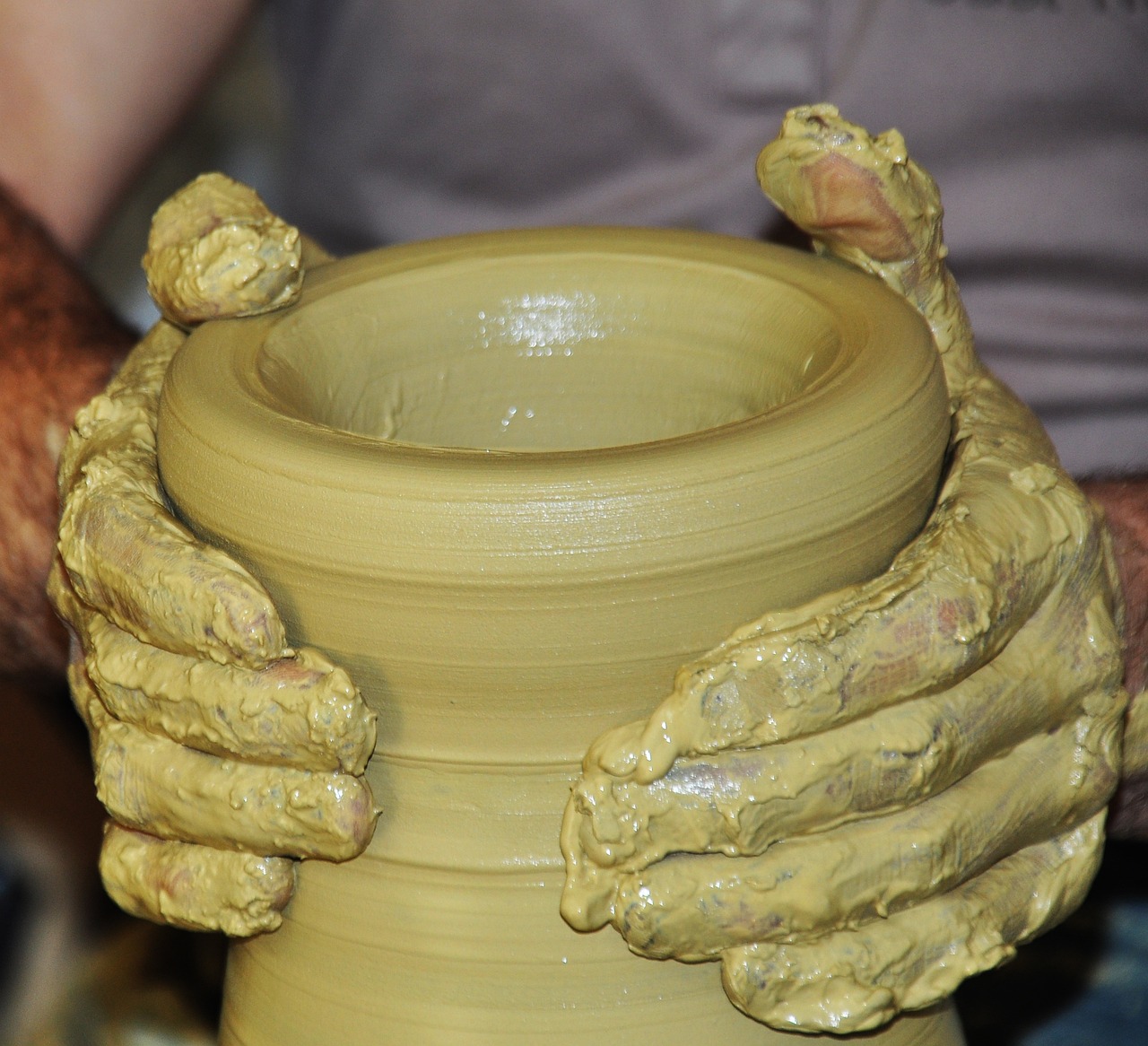
Choosing the Right Glaze
When it comes to pottery, glazes are not just a finishing touch; they are the soul of your creation. The right glaze can transform a simple piece of pottery into a stunning work of art, enhancing its color, texture, and overall appeal. But with so many options available, how do you choose the right one for your project? Here are some key considerations to keep in mind.
First and foremost, it’s essential to understand the type of clay you are using. Different clays react uniquely to glazes, which can significantly affect the final outcome. For example, earthenware typically requires a different glaze than stoneware due to their distinct firing temperatures and absorption rates. If you’re working with earthenware, look for glazes specifically formulated for low-fire applications. On the other hand, stoneware glazes are designed for higher temperatures and can produce more durable finishes.
Next, consider the finish you desire. Glazes can range from glossy to matte, each offering a different aesthetic. A glossy glaze will give your piece a shiny, reflective surface that can enhance colors and details, while a matte finish provides a more subdued, earthy look. Think about where your pottery will be displayed and how the finish will complement your overall design. For instance, a shiny glaze might be perfect for a decorative vase, while a matte glaze could be more suitable for functional kitchenware.
Another important factor is the color. The color of your glaze can dramatically alter the appearance of your pottery. It’s a good idea to experiment with test tiles to see how different glazes look after firing, as the final color can often be different from what you see in the jar. Additionally, layering glazes can create unique effects and depth, allowing you to explore your creativity further. Just remember to keep a record of your combinations for future reference!
Lastly, don’t forget about the safety aspect. If you plan to use your pottery for food or drink, it’s crucial to choose food-safe glazes. Always check the labels and ensure that the glazes you select comply with safety standards. This will not only protect your health but also ensure that your creations can be enjoyed without worry.
In summary, choosing the right glaze involves considering the type of clay, desired finish, color options, and safety requirements. Experimentation is key, so don’t hesitate to try different combinations to find what resonates with your artistic vision. Remember, the glaze is more than just decoration; it’s an opportunity to express your creativity and bring your pottery to life!
- What is the difference between earthenware and stoneware glazes?
Earthenware glazes are designed for low-fire clay and are typically more porous, while stoneware glazes are made for high-fire clay and offer greater durability. - Can I mix different glazes?
Yes, mixing glazes can create unique effects, but it's essential to test the combinations on small tiles to see how they react after firing. - Are all glazes food-safe?
No, not all glazes are food-safe. Always check the labels to ensure that the glazes you use for functional pottery are safe for food contact. - How can I achieve a matte finish on my pottery?
To achieve a matte finish, choose glazes specifically labeled as matte and avoid using glossy glazes or additives that create shine.
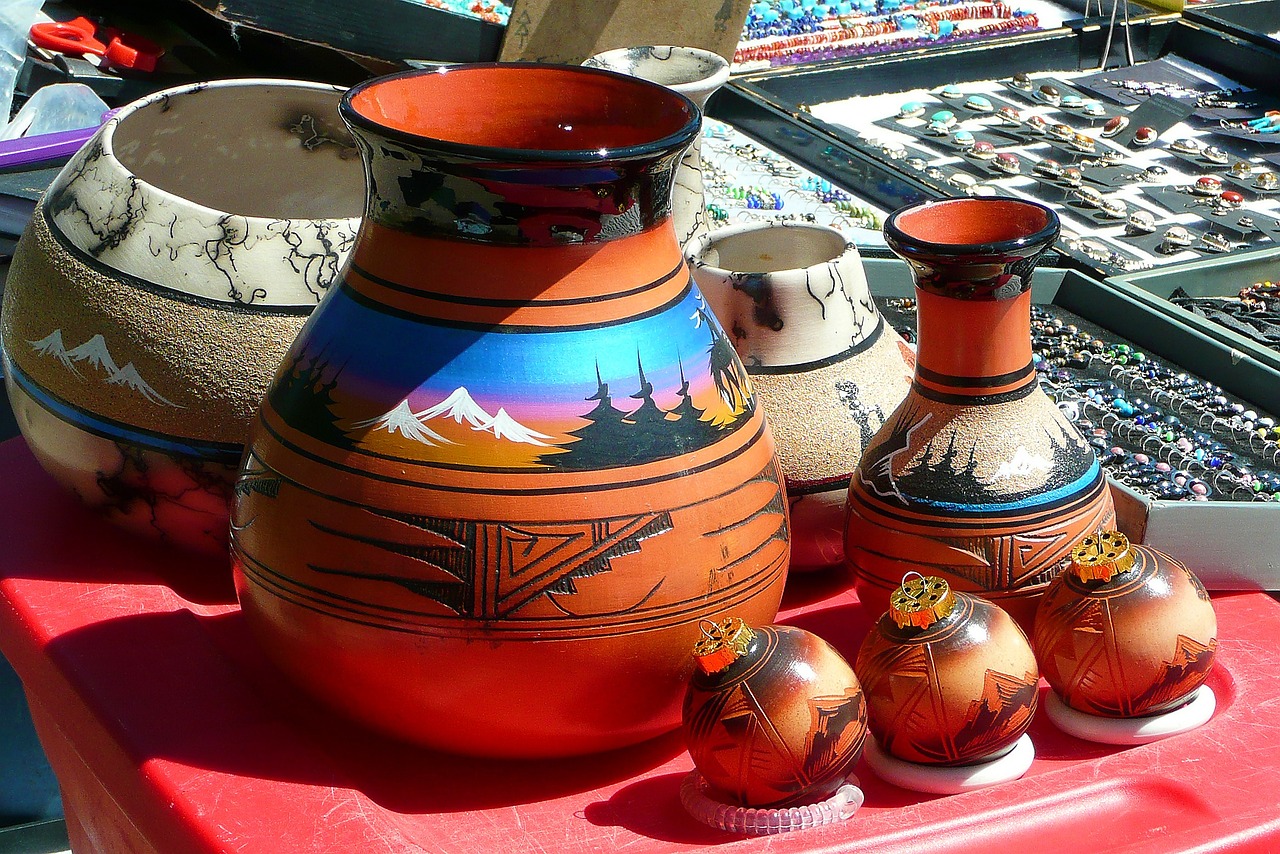
Basic Pottery Techniques
When it comes to pottery-making, mastering the basic techniques is akin to learning the foundation of a beautiful building. These techniques not only empower you to create stunning pieces but also allow you to express your unique artistic vision. The journey begins with understanding three primary methods: handbuilding, wheel throwing, and glazing. Each method offers its own set of challenges and rewards, making the pottery experience both exciting and fulfilling.
Let's start with handbuilding. This technique is perfect for beginners as it requires minimal tools and can be done at your own pace. Essentially, handbuilding involves shaping clay using your hands and simple tools. There are various methods within handbuilding, such as pinch pots, coil building, and slab construction. For instance, pinch pots are created by pinching and compressing a ball of clay, allowing for a tactile connection to the material. This method not only fosters creativity but also encourages mindfulness, as you become fully immersed in the process.
Next up is wheel throwing, a technique that may seem daunting at first but is incredibly rewarding once you get the hang of it. Using a potter's wheel, you center a lump of clay and shape it into various forms by applying pressure and manipulating the clay as it spins. The wheel allows for precision and can help you create perfectly symmetrical pieces. However, it does require practice and patience, much like learning to ride a bike. You might wobble at first, but with persistence, you’ll find your rhythm.
The final basic technique is glazing, which is where your creations truly come to life. Glazing involves applying a liquid mixture to your pottery that, when fired, transforms into a glassy finish. This not only enhances the visual appeal of your work but also serves a functional purpose by making your pieces more durable and water-resistant. Choosing the right glaze can be an art form in itself, as different glazes react uniquely during firing. Some may produce vibrant colors, while others yield subtle textures. Experimenting with glazes can lead to delightful surprises, much like opening a gift that you didn’t expect!
As you embark on your pottery journey, it’s essential to remember that practice makes perfect. Here’s a quick overview of the basic techniques:
| Technique | Description | Best For |
|---|---|---|
| Handbuilding | Shaping clay using hands and simple tools. | Beginners and unique, organic forms. |
| Wheel Throwing | Using a potter's wheel to create symmetrical pieces. | Functional pottery and precision work. |
| Glazing | Applying a liquid mixture that transforms into a glassy finish. | Enhancing aesthetics and durability. |
In conclusion, whether you find yourself molding a simple pinch pot or throwing a complex vase on the wheel, each technique offers a unique pathway for self-expression. So, grab that clay, let your hands get dirty, and dive into the wonderful world of pottery. You might just discover a new passion that resonates with your soul!
- What type of clay should I start with as a beginner? Earthenware is a great choice for beginners due to its workability and versatility.
- How long does it take for pottery to dry before firing? Typically, it takes about 1-2 days for pottery to dry, but this can vary based on thickness and humidity.
- Can I use regular paint on my pottery? No, regular paint is not suitable for pottery. Always use glazes specifically designed for ceramics.
- Do I need a kiln to fire my pottery? Yes, a kiln is necessary for firing pottery to achieve durability and the desired finish.
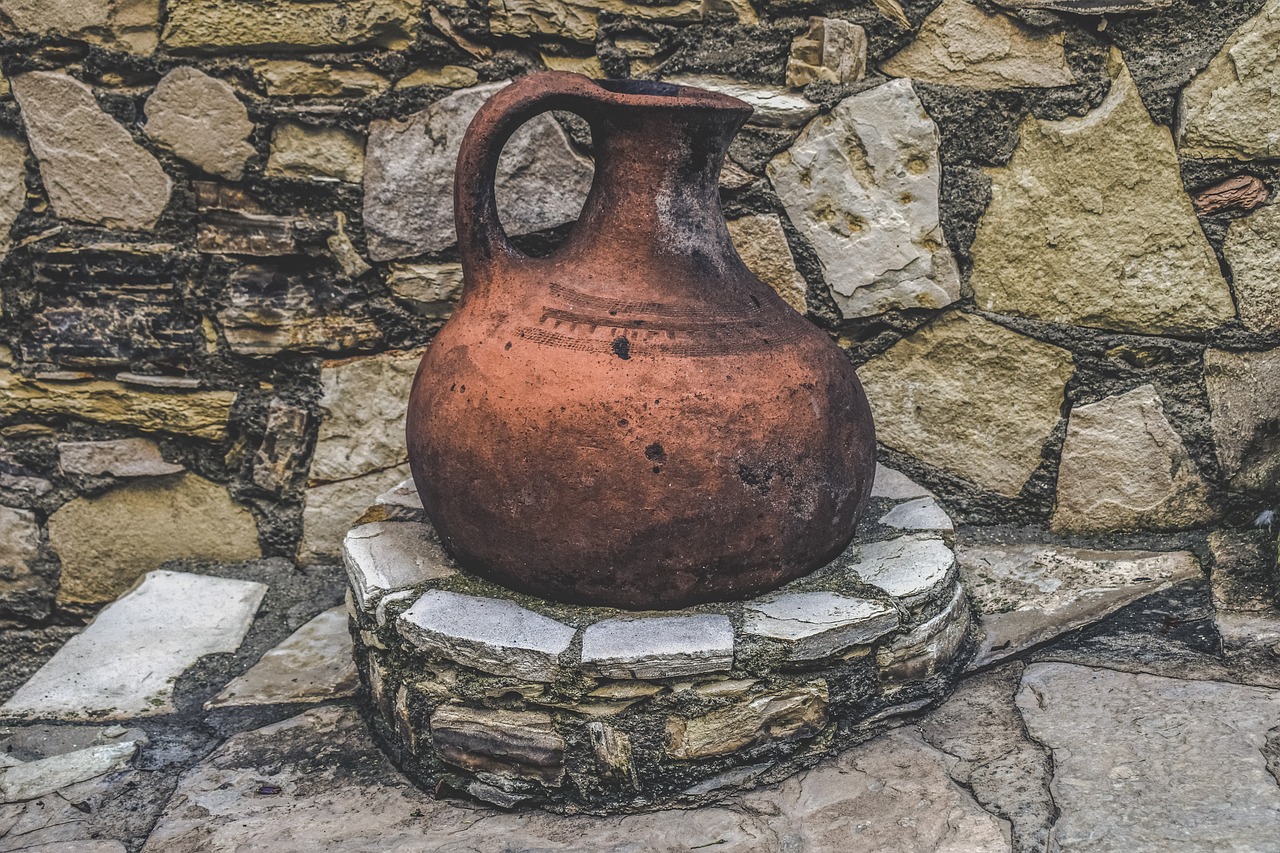
Exploring Personal Creativity
Pottery is not just about molding clay; it’s a powerful medium for self-expression that invites you to delve deep into your creative soul. Think of it as a dance between your hands and the earth, where every twist and turn of the clay reflects your innermost thoughts and feelings. As you shape the clay, you’re not merely creating a vessel; you’re uncovering layers of your own identity and artistic voice.
When you sit down at the pottery wheel or begin to hand-build your piece, you enter a world where imagination reigns. Each creation tells a story, and every imperfection can be seen as a unique fingerprint of your journey. This tactile process allows you to explore various forms, textures, and colors, enabling you to express emotions that words often fail to capture. Have you ever felt the rush of inspiration while watching the way light dances on a freshly glazed pot? That’s the magic of pottery, where inspiration is everywhere.
Finding inspiration can sometimes be a challenge, but it often comes from the most unexpected places. Consider the following sources:
- Nature: The colors of a sunset, the texture of tree bark, or the shape of a flower can ignite your creativity.
- Culture: Art from different cultures can provide fresh perspectives and techniques that you can incorporate into your work.
- Personal Experiences: Your own life stories and emotions can serve as a rich well of inspiration, allowing you to create pieces that resonate deeply with you and others.
Once you begin to tap into these sources of inspiration, you’ll find that your pottery journey becomes a reflection of your personal growth. It’s essential to document this journey, not just for the sake of keeping track, but to truly appreciate how far you’ve come. Consider maintaining a pottery journal or portfolio where you can:
- Sketch new ideas and designs.
- Write down thoughts and reflections after each session.
- Include photographs of your finished pieces to visually document your progress.
This practice of documenting your journey is like holding a mirror up to your creative self. It allows you to reflect on your growth, recognize patterns in your work, and even identify areas for improvement. Plus, revisiting your earlier pieces can spark new ideas and reinvigorate your passion for pottery.
As you explore your personal creativity through pottery, remember that the journey is just as important as the destination. Embrace the process, celebrate your successes, and learn from your mistakes. Each piece you create is a step toward discovering your artistic identity, a journey that is uniquely yours. So, grab that clay, let your imagination run wild, and watch as your creativity unfolds in the most beautiful ways.
Q: How can pottery help with self-expression?
A: Pottery allows you to physically manipulate materials, turning your emotions and thoughts into tangible forms. This process can be incredibly therapeutic and liberating.
Q: What should I do if I feel stuck creatively?
A: Sometimes stepping away and seeking inspiration from nature, art, or even a different medium can help. Consider joining pottery classes or workshops to gain new perspectives.
Q: Is it necessary to document my pottery journey?
A: While it's not mandatory, documenting your journey can provide insights into your growth and help you track your progress. It can also serve as a source of inspiration for future projects.

Finding Inspiration
Finding inspiration in pottery can be an exhilarating journey, much like embarking on a treasure hunt. You never quite know what you might uncover or how it will influence your creative process. Inspiration for your pottery creations can come from a multitude of sources, and the key is to remain open and curious. For many artists, the world around them serves as a rich tapestry of ideas waiting to be explored. Whether it's the vibrant colors of a sunset, the intricate patterns found in nature, or the stories embedded in cultural artifacts, each element can spark a new idea or technique to try.
One effective way to cultivate inspiration is to immerse yourself in nature. Take a stroll through a local park, hike a nearby trail, or simply sit in your garden. Notice the textures, colors, and forms that surround you. Perhaps the smoothness of a river stone will inspire a new shape for a bowl, or the vibrant hues of autumn leaves might lead you to experiment with glazing techniques. Nature is a boundless source of creativity, and its beauty can ignite your imagination in ways you never thought possible.
Additionally, exploring different cultures can provide a wealth of ideas. Each culture has its unique artistic traditions, and pottery is no exception. By studying various styles, you can gain insights into different techniques and aesthetics that you can incorporate into your own work. For instance, you might find yourself drawn to the intricate designs of Japanese Raku pottery or the bold colors of Mexican Talavera. Understanding the stories and significance behind these styles can deepen your appreciation and inspire you to create something that resonates with your own experiences.
Moreover, personal experiences play a crucial role in shaping your artistic voice. Reflecting on your life journey can lead to profound insights that translate into your pottery. Think about significant moments, emotions, or challenges you've faced. How can these experiences inform your work? Perhaps a piece that symbolizes resilience or a vessel that represents a cherished memory can emerge from this introspection. Your unique story can become a powerful source of inspiration, allowing you to connect with others through your art.
To enhance your pottery-making journey, consider keeping an inspiration journal. This can be a simple notebook where you jot down ideas, sketches, or even snippets of conversations that spark your creativity. You might also include photographs of nature, art, or architecture that capture your imagination. Over time, this collection can serve as a personalized wellspring of inspiration, reminding you of the moments and ideas that have fueled your passion for pottery.
In summary, finding inspiration for your pottery creations is a deeply personal process. By exploring nature, studying different cultures, reflecting on your experiences, and documenting your journey, you can unlock a world of creativity that enriches your artistic practice. Remember, inspiration is everywhere; all you need to do is look around with an open heart and a curious mind.
- What materials do I need to start pottery? You will need clay, tools for shaping, a pottery wheel (if wheel throwing), and glazes for finishing your pieces.
- How can I find a pottery class near me? Check local art studios, community colleges, or online platforms that offer pottery workshops.
- Is pottery a good way to relieve stress? Absolutely! The tactile process of working with clay can be incredibly meditative and therapeutic.
- Can I create pottery at home? Yes, with the right tools and space, you can definitely create pottery at home. Just ensure you have proper ventilation if you're using a kiln.
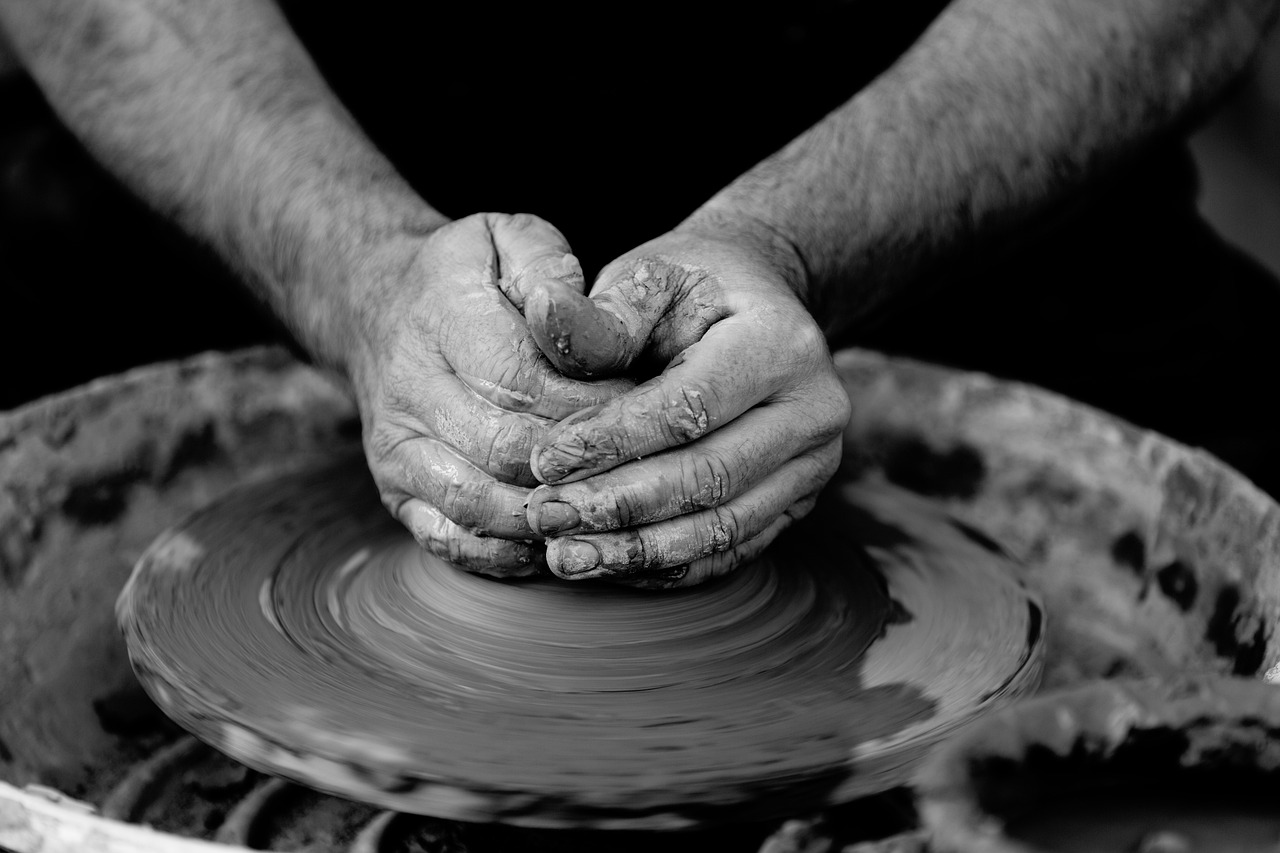
Documenting Your Progress
When you embark on the journey of pottery-making, one of the most rewarding practices you can adopt is . This isn't just about keeping track of your creations; it's a powerful tool for reflection and growth. Imagine flipping through a scrapbook filled with your artistic endeavors, each piece telling a story of your evolution as a potter. By maintaining a record, you can celebrate your achievements, learn from your mistakes, and ignite your creativity for future projects.
Start by creating a dedicated pottery journal or portfolio. This can be a simple notebook or a digital document—whatever resonates with you. In this space, you can include:
- Photographs of your finished pieces, capturing the details and colors that make each item unique.
- Sketches of ideas you want to explore, allowing you to visualize your concepts before you start working with clay.
- Notes on techniques used, such as the type of clay and glaze, along with any challenges faced during the process.
- Reflections on what you learned from each project, which can help you identify patterns in your work and areas for improvement.
Moreover, documenting your progress can serve as a source of motivation. When you look back at your earlier works, you might be surprised at how far you've come. It's like watching a time-lapse of your artistic journey, where every piece represents a stepping stone toward mastery. This practice not only fosters a sense of accomplishment but also cultivates a deeper connection to your craft.
As you continue to grow, consider sharing your documentation with a community of fellow potters or artists. Engaging with others can provide valuable feedback and inspire new ideas. You might even find that your journey encourages others to start their own! Remember, pottery is not just about the final product; it's about the experience, the learning, and the joy of creation. So, grab that journal, start documenting, and watch your artistic voice flourish!
Q: Why is it important to document my pottery progress?
A: Documenting your progress helps you reflect on your growth, celebrate achievements, and learn from challenges. It can also serve as a source of inspiration for future projects.
Q: What should I include in my pottery journal?
A: Include photographs of your pieces, sketches of ideas, notes on techniques, and reflections on what you learned. This comprehensive approach will help you track your journey effectively.
Q: Can sharing my documentation with others benefit me?
A: Absolutely! Sharing your work with a community can provide valuable feedback, foster connections, and inspire new ideas. It’s a great way to grow as an artist.
Q: How often should I update my pottery journal?
A: It's best to update your journal regularly, ideally after completing each piece or project. This ensures that your reflections and insights are fresh and relevant.
Frequently Asked Questions
- What are the therapeutic benefits of pottery-making?
Pottery-making is more than just a creative outlet; it's a form of therapy! Engaging with clay can significantly reduce stress and anxiety. The tactile experience of shaping and molding clay can be meditative, allowing you to focus on the present moment and forget about your worries. Plus, there's nothing quite like the feeling of accomplishment when you complete a piece!
- What essential tools do I need to start pottery?
Getting started in pottery doesn't have to be overwhelming! Essential tools include a pottery wheel (if you're into wheel throwing), various shaping tools, a sponge, a needle tool, and of course, clay! Don’t forget about safety gear like an apron and a dust mask. Having the right tools can set you up for success and make the journey even more enjoyable.
- What types of clay should I use as a beginner?
As a beginner, you might want to start with earthenware or stoneware. Earthenware is super forgiving and great for decorative pieces, while stoneware is more durable and can be used for functional items. Each type of clay has its own unique properties, so experimenting with both can be a fun way to discover what you like!
- How do I choose the right glaze for my pottery?
Selecting the right glaze can be a game-changer for your pottery! Glazes enhance the beauty of your pieces and provide a protective layer. Consider the final look you want to achieve and the type of clay you’re using. It's often helpful to test a few glazes on small pieces to see how they react during firing.
- What basic techniques should I learn in pottery?
Mastering basic techniques like handbuilding, wheel throwing, and glazing is essential for any beginner. These skills will help you express your creativity and develop your unique style. Don't be afraid to make mistakes along the way; that's all part of the learning process!
- Where can I find inspiration for my pottery projects?
Inspiration can come from all around you! Nature, culture, and even your personal experiences can spark ideas for your pottery. Keep your eyes open and your mind curious. You might find that a walk in the park or a visit to a museum can ignite your creativity!
- Should I document my pottery journey?
Absolutely! Keeping a journal or portfolio of your pottery journey can be incredibly beneficial. It allows you to track your progress, reflect on your growth, and even inspire new ideas for future projects. Plus, it’s always fun to look back and see how far you’ve come!



















